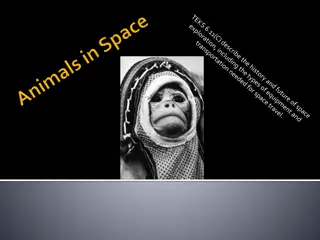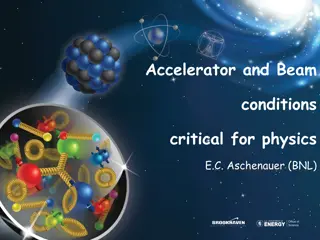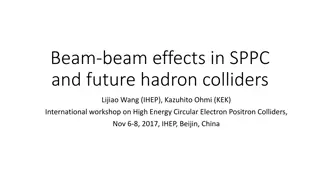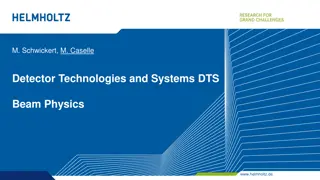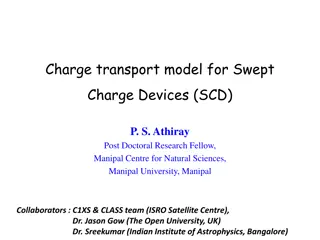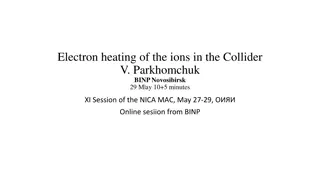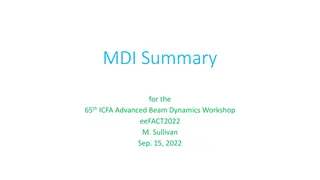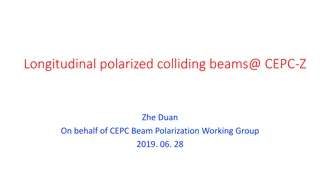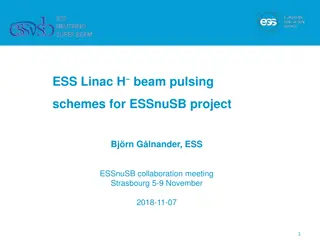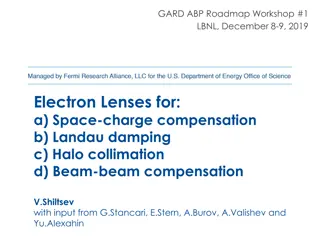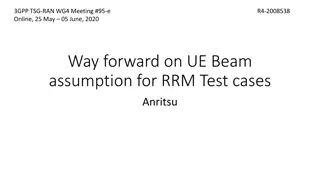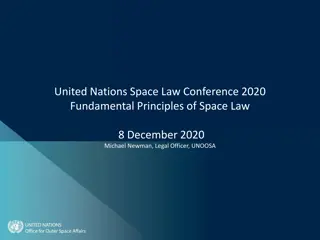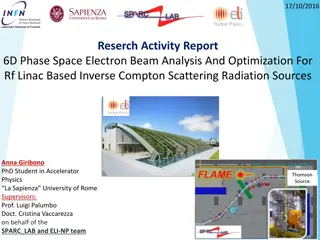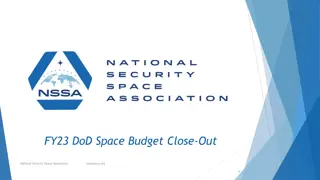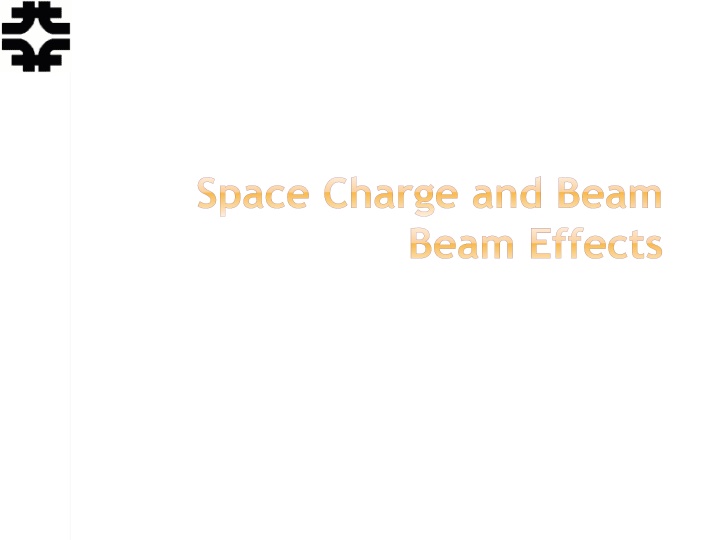
Space Charge and Beam Beam Effects in Accelerators
Explore the impact of space charge and beam beam effects on particle distribution in accelerators, with insights on field calculations, Amperes' Law, and beam component analysis. Learn about classical radius, tuneshift considerations, and practical examples from Fermilab Booster. Discover strategies like beam painting for managing space charge tuneshifts in accelerator operation.
Download Presentation

Please find below an Image/Link to download the presentation.
The content on the website is provided AS IS for your information and personal use only. It may not be sold, licensed, or shared on other websites without obtaining consent from the author. If you encounter any issues during the download, it is possible that the publisher has removed the file from their server.
You are allowed to download the files provided on this website for personal or commercial use, subject to the condition that they are used lawfully. All files are the property of their respective owners.
The content on the website is provided AS IS for your information and personal use only. It may not be sold, licensed, or shared on other websites without obtaining consent from the author.
E N D
Presentation Transcript
Space Charge and Beam Beam Effects Eric Prebys, FNAL
Space Charge So far, we have not considered the effect that particles in a bunch might have on each other, or on particles in another bunch. Consider the effect off space charge on the transverse distribution of the beam. E r r ( )= B Ne 2ps2e-r2/2s2 radial charge density If we look at the field at a radius r, we have 2 E. Prebys - Accelerator Fundamentals, Space Charge USPAS, Ft. Collins, CO June 13-24, 2016
Similarly, Amperes Law gives r Nev s2L ) q re-r2/2s2dr = 2prB = m0Ienclosed= m0 Bidl 0 ( Nev 2prL1-e-r2/2s2 B = m0 = - r Linear charge density 3 E. Prebys - Accelerator Fundamentals, Space Charge USPAS, Ft. Collins, CO June 13-24, 2016
We can break this into components in x and y Fxx,0 ( ) Non-linear and coupled ouch! but for x<< x ~sx x ~linear and decoupled 4 E. Prebys - Accelerator Fundamentals, Space Charge USPAS, Ft. Collins, CO June 13-24, 2016
classical radius=1.5310-18 m for protons ds 1 f This looks like a distributed defocusing quad of strength d nr0 k = - b2g 3s2 so the total tuneshift is Bunching factor Maximum tuneshift for particles near core of beam 5 E. Prebys - Accelerator Fundamentals, Space Charge USPAS, Ft. Collins, CO June 13-24, 2016
Example: Fermilab Booster@Injection This is pretty large, but because this is a rapid cycling machine, it is less sensitive to resonances Because this affects individual particles, it s referred to as an incoherent tune shift , which results in a tune spread. There is also a coherent tune shift , caused by images charges in the walls of the beam pipe and/or magnets, which affects the entire bunch more or less equally. This is an important effect, but beyond the scope of this lecture. 6 E. Prebys - Accelerator Fundamentals, Space Charge USPAS, Ft. Collins, CO June 13-24, 2016
Space Charge Considerations In general, space charge tuneshifts limit the total beam that can be injected into a machine. The tuneshift is and we would like to keep the magnitude below about .2 One technique is to paint the beam to fill the aperture and reduce the normalized emittance Example: The J-PARC in Japan injects 400 MeV beam into their Rapid Cycling Synchrotron and paints it to uniformly populate 100 -mm-mrad E. Prebys - Accelerator Fundamentals, Space Charge 7 USPAS, Ft. Collins, CO June 13-24, 2016
Increasing Energy Including different distributions: Bunch factor = Ipeak/Iave (Reduce with higher RF harmonics) total protons = . 5 for Gaussian emittance 3 for 95% Gaussian emittance 1 for 100% uniform (painted) emittance normalized emittance So the maximum injected charge grows rapidly with increasing energy bg2 b2g3 without painting Nmax painted to fill physical aperture doesn t include improvement of going to uniform distribution with painting E. Prebys - Accelerator Fundamentals, Space Charge 8 USPAS, Ft. Collins, CO June 13-24, 2016
Beam-beam Interaction If two oppositelycharged bunches pass through each other B B E E Both E and B fields are attractive to the particles in the other bunch v v If two bunches with the samesign pass through each other B B E E Both E and B fields are repulsive to the particles in the other bunch v v In either case, the forces add 9 E. Prebys - Accelerator Fundamentals, Space Charge USPAS, Ft. Collins, CO June 13-24, 2016
2 vp; y =Fy x =Fx vpDs; D y =Fy D x =Fx vpDs vp Integrate Effective Length L L v v Front of first bunch encounters front of second bunch Front of first bunch exits second bunch. v v L 2 Effective length 10 E. Prebys - Accelerator Fundamentals, Space Charge USPAS, Ft. Collins, CO June 13-24, 2016
b 1 Small x and y Maximum tuneshift for particles near center of bunch normalized emittance Tuneshift Parameter 11 E. Prebys - Accelerator Fundamentals, Space Charge USPAS, Ft. Collins, CO June 13-24, 2016
Luminosity and Tuneshift The total tuneshift will ultimately limit the performance of any collider, by driving the beam onto an unstable resonance. Values of on the order ~.02 are typically the limit. However, we have seen the somewhat surprising result that the tuneshift does not depend on *, but only on For a collider, we have We assume we will run the collider at the tuneshift limit , in which case we can increase luminosity by Making * as small as possible Increasing Nb and proportionally. 12 E. Prebys - Accelerator Fundamentals, Space Charge USPAS, Ft. Collins, CO June 13-24, 2016


